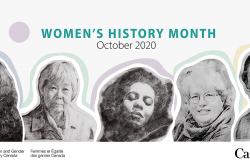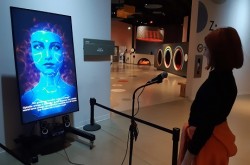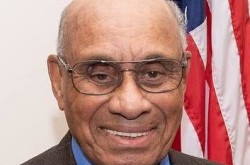Women in STEM: A conversation with Micaela Gray

Canadian astronaut and neurologist Roberta Bondar once said, “Exploration is not something you retire from. It is a part of one’s life ethic.” That sentiment of continuity — of striving to break new ground — is critical to uphold, even as we celebrate the past achievements of women who have gone before us during Women’s History Month.
Through its Women in STEM initiative, Ingenium is telling the stories of those who dared to think differently — in an effort to foster conversations around gender equity and promote careers for women in Science, Technology, Engineering, and Math (STEM). Similarly, the Dr. Roberta Bondar Career Development Program offers an opportunity for women working in STEM to network with industry leaders and peers, and get a behind-the-scenes look at the science and tech industries in Canada.
This month, the Ingenium Channel is highlighting a series of talented, Canadian women who are participating in the Dr. Roberta Bondar Career Development Program. In today’s profile we introduce you to Micaela Gray, a research technician who is helping to ensure the safety and security of Canadian cereal grains.

Ingenium Channel (IC): Tell me about your area of expertise. Where are you working, and what is one of your current projects?
Micaela Gray (MG): My academic history spans a BSc in Toxicology and a research-based MSc in Chemistry, both at the University of Guelph, Ontario. Currently, I’m working as a research technician with Agriculture and Agri-Food Canada (AAFC), in a small prairie town in southern Manitoba. When I joined AAFC, I had the incredible opportunity to design and equip a new mycotoxin research laboratory — where we use analytical chemistry and immunological techniques to assess mycotoxin content in cereal grains. We collaborate with breeders, pathologists, and microbiologists to reduce mycotoxin contamination, helping to ensure food safety and security in Canadian grains. As the lead laboratory technician, I generate data for a variety of mycotoxins using our new liquid chromatography-mass spectrometer. I also direct junior technicians on enzyme-linked immunosorbent assays, juggle multiple research projects, and ensure the lab functions safely and effectively.
IC: Is there a person who inspired or encouraged you to choose your educational path and career?
MG: I would have to thank Mr. Ross, my Grade 8 science teacher, for sparking my fascination with science. He was the first person to show me that science is tangible, visual, and exciting! My passion for science grew steadily throughout high school and into university. As I began conducting scientific research of my own in graduate school, I enjoyed the freedom of self-directed experiments and the “hands on” nature of chemistry. Ironically, some of the most memorable moments of my research-based degree unfolded in a chemistry teaching lab. As a teaching assistant, I felt completely in my element solving newly emerging problems, and sharing my enthusiasm and scientific knowledge to both inspire students and help them achieve their full potential. I channeled these same qualities into my research, ultimately producing biosensors for biologically relevant compounds, which have been published in one of the world’s leading chemistry journals.
IC: Is there anyone in Ingenium’s Women in STEM poster series that you find inspirational?
MG: Absolutely, they are all amazing women! In particular, I admire Dr. Hind Al–Abadleh’s commitment to environmental stewardship and her academic success as a woman and visible minority in STEM. This inspiring woman channels her passion for people and science into award-winning research programs, which allow her to make waves in the field of environmental physical chemistry while mentoring students at multiple levels. She also prioritizes community engagement and is a passionate advocate for climate change awareness.
Dr. Al–Abadleh and I share interests in mentorship and personal development, and I too hope to influence others in shaping their scientific careers. She is an inspirational leader in my field and a shining example of the product of hard work, determination, and a passion for science!
IC: Describe one of the challenges or biases you had to overcome on your professional journey.
MG: I believe personal and professional development are a lifelong journey, spurred by seizing opportunities and learning from inspiring people. That being said, as a young woman just starting my career I sometimes struggle with finding the confidence to develop a professional network and the courage to work towards leadership/managerial positions which come with a high level of responsibility. By participating in the 2020 Dr. Roberta Bondar Career Development Program, I’ve gained exposure to a network of strong and inspirational female leaders in STEM who provide first-hand guidance in navigating my unique path in career development and leadership. This mentorship experience has been invaluable in bolstering my confidence and continues to inspire me to push my career goals even higher.
IC: Where do you hope to go from here?
MG: The mentorship I’ve received through the Dr. Roberta Bondar Program has inspired me to think more deeply about the intersection of my personal values, natural talents, and career aspirations. Through this process of self-reflection, I’ve discovered that I’m passionate about solving complex scientific problems, teaching others, and leadership — and I’m currently searching for a career path within my field of analytical chemistry which could align all three. I’m feeling encouraged to try a variety of roles within different organizations, until I land on something that really resonates with my values and aspirations.
IC: Do you have any words of advice for a young girl who wants to follow in your footsteps?
MG: I would encourage young girls who are drawn to STEM not to shy away or let their enthusiasm wane! STEM is a vast, ever-changing field with something for everyone — no matter your race, age, or gender. Play around and explore your interests; you don’t need to pigeon-hole yourself into one discipline. Take me, for example: When I entered university, I thought I would become a biomedical physicist but ended up pursuing the interdisciplinary field of toxicology. This allowed me to indulge my interests in both chemistry and biology, and opened the door to an array of career paths in either field. My advice is to chase what you’re most interested in and grasp new opportunities as they arise; you never know where they might lead you!
Connect with Micaela
I’d like to invite Ingenium Channel readers to connect with me on LinkedIn, to continue this conversation around personal and career development and empowering women in STEM. I’m also always open to mentoring others and would love to help you navigate your own unique career path!
Micaela Gray’s LinkedIn Profile: www.linkedin.com/in/micaelagray
































































